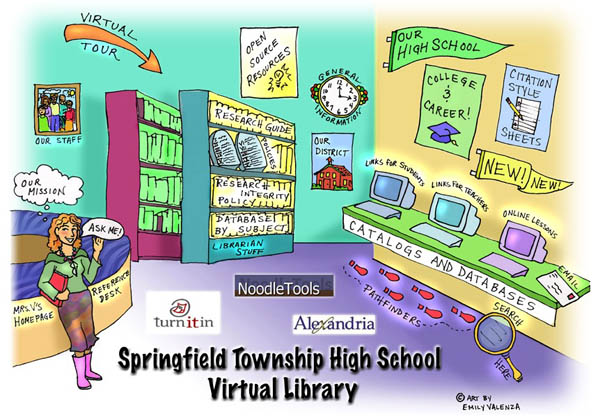Bob and I have been impressed with what we’ve been reading on a series of sites maintained by Joyce Valenza, a teacher-Librarian at the Springfield Township High School Library in Erdenheim, Pennsylvania. Of particular interest is a chart she’s put together entitled “30 Years of Information and Educational Change: How should our practice respond?” which records the dramatic technological shifts that have taken place since she began studying library science nearly three decades ago, and how her thinking has evolved:
I graduated with an MLS in 1977 and had to return and redo most of the credits in 1987/1988 to get education credentials. While I learned programming the first time around and personal computer applications the second time around, the rate of change has dramatically altered the landscape.
I see an urgent need for librarians to retool. We cannot expect to assume a leadership role in information technology and instruction, we cannot claim any credibility with students, faculty, or administrators if we do not recognize and thoughtfully exploit the paradigm shift of the past two years. Retooling is essential for the survival of the profession.
The role of the librarian has traditionally to guide the user into a dense grove of knowledge, instructing them how best to penetrate, navigate and reference a relatively stable corpus. But with the explosion of personal computers and networks comes the explosion of the library. The librarian becomes a strategic advisor at the gateway to a much larger and continually shifting array of resources and tools that extends well beyond the physical boundaries of the library. The user no longer needs to be guided inward, but guided outward, and in multiple directions. The librarian in an academic or school setting must help students and scholars to match up the right materials with the right modes of communication, while also fostering a critical and ethical outlook in a world awash in information. The librarian is more crucial than ever.
The physical space of the library is still vital too, Valenza argues, and nowhere is this better conveyed than in this charming “virtual library” page she has constructed for the library’s home page (that’s her standing by the reference desk):

It seems almost too obvious to use the physical library as an interface, but I was immediately struck by how intuitive and useful this page is, and how, so simply and with such spirit, it creates an almost visceral link between the physical library and its online dimensions.
(Also check out Valenza’s blog, NeverEnding Search.)

Wow! This is a rare resource on the synergy of page and screen, albiet posed as transition. More likely a timeless continuity of hybrid reading methods.
Here are two much rougher charts (one) and (two) We appear headed toward a tertiary orality, toward wide experiment in learning and reading and toward new and virtual social behaviors.
Ben writes:
The librarian becomes a strategic advisor at the gateway to a much larger and continually shifting array of resources and tools that extends well beyond the physical boundaries of the library. The user no longer needs to be guided inward, but guided outward, and in multiple directions. The librarian in an academic or school setting must help students and scholars to match up the right materials with the right modes of communication, while also fostering a critical and ethical outlook in a world awash in information. The librarian is more crucial than ever.
Joyce Valenza’s chart makes a lot of sense, especially her implications for the future of learners, educators and schools, and how central the role of libraries and librarians continues to be. What she shows in her “Virtual Library” is the need to communicate using emerging tools in a world where books, e-books and databases co-exist. Her vision of what library services should be, such as “need for blended service in the form of Web sites, blogs, pathfinders customized to meet students’ information and developmental needs,” points at the pedagogical importance of blogs and wikis to create projects relevant to 21st century learning. The use of these emerging tools for communication, with their emphasis on feedback, invites collaborative learning and facilitates a learner-centered/learner-empowered environment. This also implies the public projection of students’ work when produced in a networked environment and how this affects instruction and motivation. Her questions about what role will collaboratively created e-books and new media will play in education and how can we use these new tools for teaching, practicing, and reflecting on information fluency are central in any projections for the future, which is now, and how will we design learning environments that truly reflect our times.